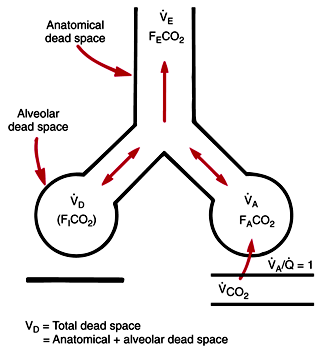

NHF may be utilized to increase tidal breathing during wakefulness and to relieve respiratory loads during sleep. The mechanisms of action for NHF differ from those of CPAP and are sleep/wake-state dependent.

In the nasal cavity model, NHF increased expiratory but decreased inspiratory resistance depending on both the cannula size and the expiratory flow rate. In contrast, during sleep, NHF led to a ∼20% fall in minute ventilation due to a decrease in tidal volume and no change in f R. During wakefulness, NHF led to an increase in tidal volume from 0.7 ± 0.1 liter to 0.8 ± 0.2, 1.0 ± 0.2, and 1.3 ± 0.2 liters, and a reduction in respiratory rate ( f R) from 16 ± 2 to 13 ± 3, 10 ± 3, and 8 ± 3 breaths/min (baseline to 15, 30, and 45 liters/min NHF, respectively P < 0.01). In addition, a nasal cavity model was used to compare pressure/air-flow relationships of NHF and continuous positive airway pressure (CPAP) throughout simulated breathing. We conducted a randomized, controlled, cross-over study consisting of four separate ∼60-min visits, each 1 wk apart, to determine the effect of NHF on ventilation during wakefulness (NHF at 0, 15, 30, and 45 liters/min) and sleep (NHF at 0, 15, and 30 liters/min). Ten healthy participants were recruited to determine ventilatory responses to NHF of air at 37☌ and fully saturated with water. Nasal high flow (NHF) has been shown to increase expiratory pressure and reduce respiratory rate but the mechanisms involved remain unclear.


 0 kommentar(er)
0 kommentar(er)
